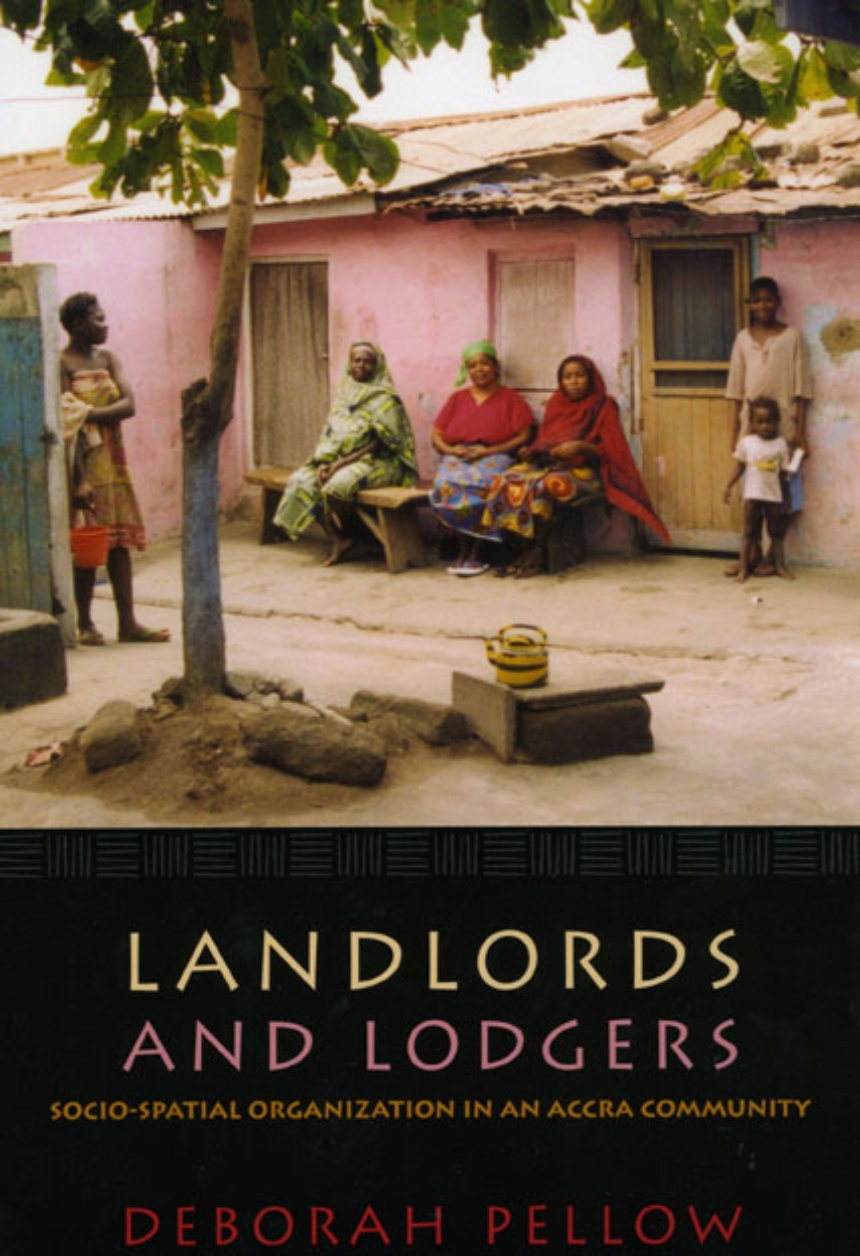Landlords and Lodgers
Socio-Spatial Organization in an Accra Community
Landlords and Lodgers analyzes the results of a long-term study of a Ghanaian zongo, or “stranger quarter”—a place of refuge for Hausa migrants from northern Nigeria who have relocated to the city of Accra. Deborah Pellow explores the relationships among community members both in terms of the built structures—rooms, doors, communal structures, and hallways—and of the social networks, institutions, and routine activities that define this unique urban neighborhood. This volume will be useful to students and scholars of the relationships between architecture, migration, and social change.
“This richly observed and lovingly constructed portrait of a distinctive community will be of interest to spatially informed scholars of religion, immigration, minority communities, and gender.”—Gender, Place and Culture
“This theoretically informed, well-researched, and closely written book should be quite useful. . . . A fine case study of urban sense of place in a unique, yet in some ways emblematic, West African neighborhood.”—Gareth Myers, Professional Geographer
“This richly observed and lovingly constructed portrait of a distinctive community will be of interest to spatially informed scholars of religion, immigration, minority communities, and gender.”—Gender, Place and Culture
“This theoretically informed, well-researched, and closely written book should be quite useful. . . . A fine case study of urban sense of place in a unique, yet in some ways emblematic, West African neighborhood.”—Gareth Myers, Professional Geographer
280 pages | 8 halftones, 4 maps, 45 figures | 6 x 9 | © 2008
Anthropology: Cultural and Social Anthropology
Reviews
Table of Contents
Illustrations
Glossary
Preface
1 Introduction
2 The Urban Cultural Context
3 Strangers, Struggles, and the Creation of Sabon Zongo
4 Sabon Zongo: Environmental Delimitations
5 Ties That Bind
6 Everyday Life
7 Anthill Architecture: The Involuted Compound
8 Compound Social Space: Transformations through Living
9 Conclusion: Zongwanci
Appendix
Bibliography
index
Glossary
Preface
1 Introduction
2 The Urban Cultural Context
3 Strangers, Struggles, and the Creation of Sabon Zongo
4 Sabon Zongo: Environmental Delimitations
5 Ties That Bind
6 Everyday Life
7 Anthill Architecture: The Involuted Compound
8 Compound Social Space: Transformations through Living
9 Conclusion: Zongwanci
Appendix
Bibliography
index
